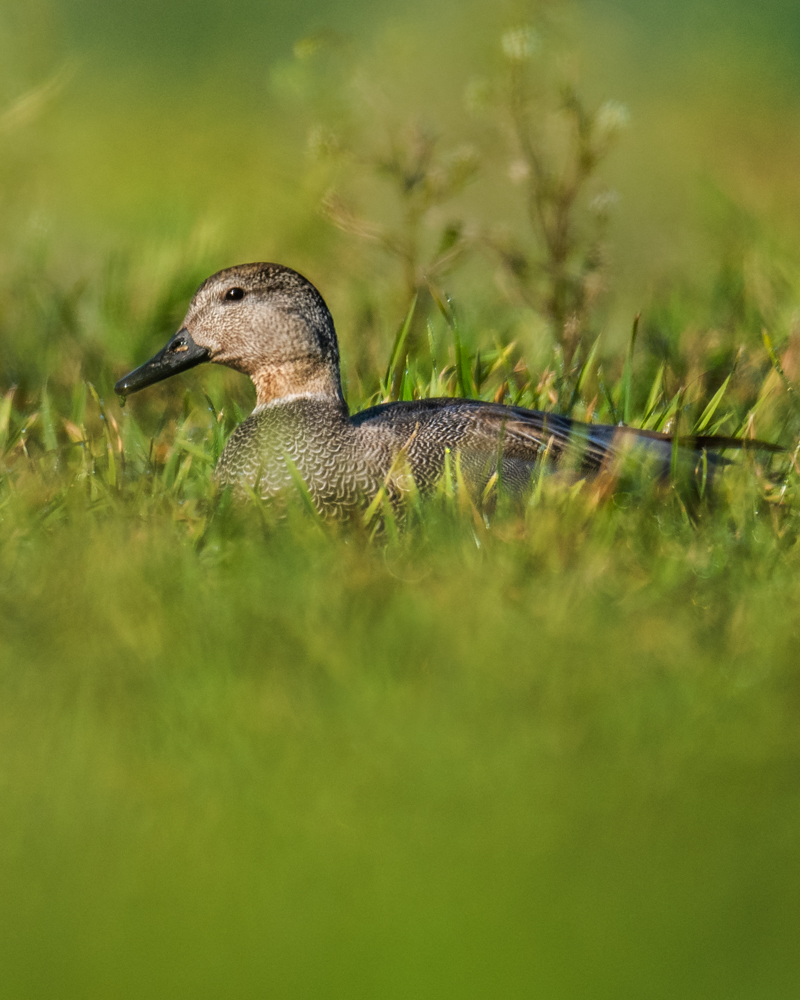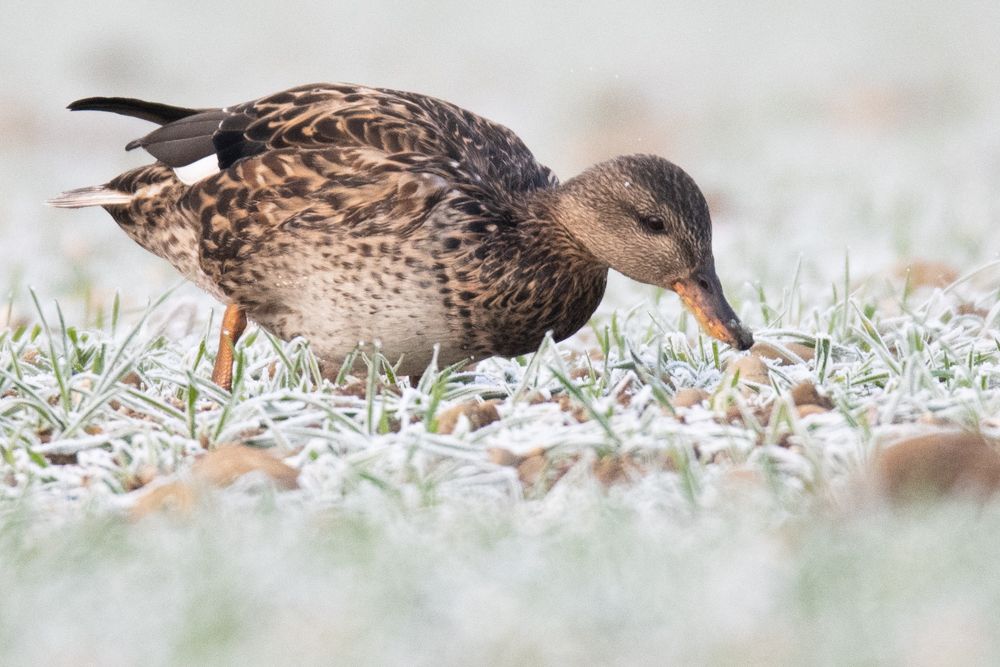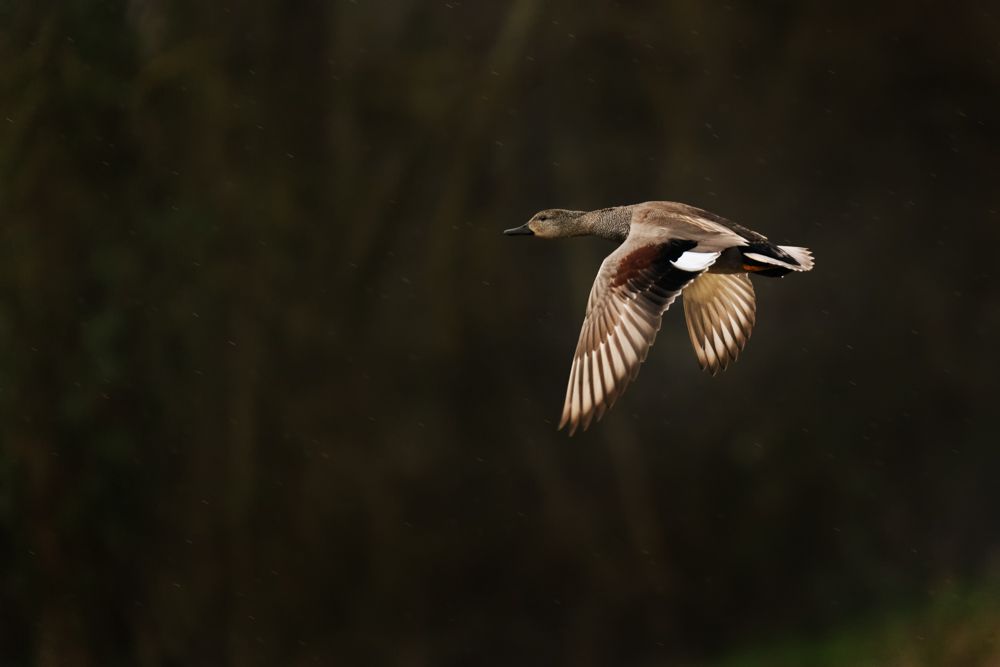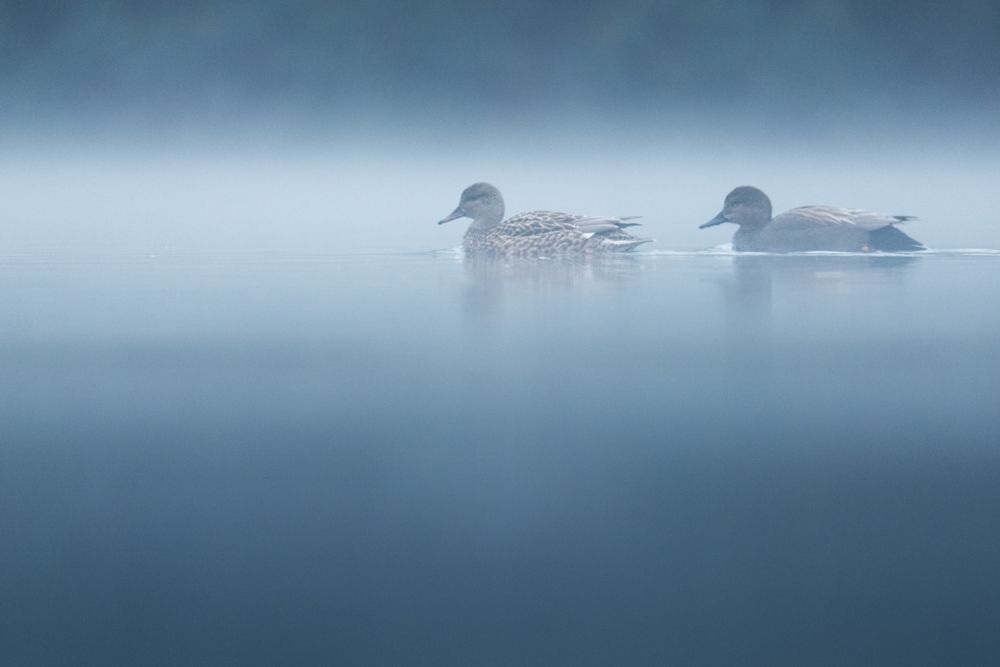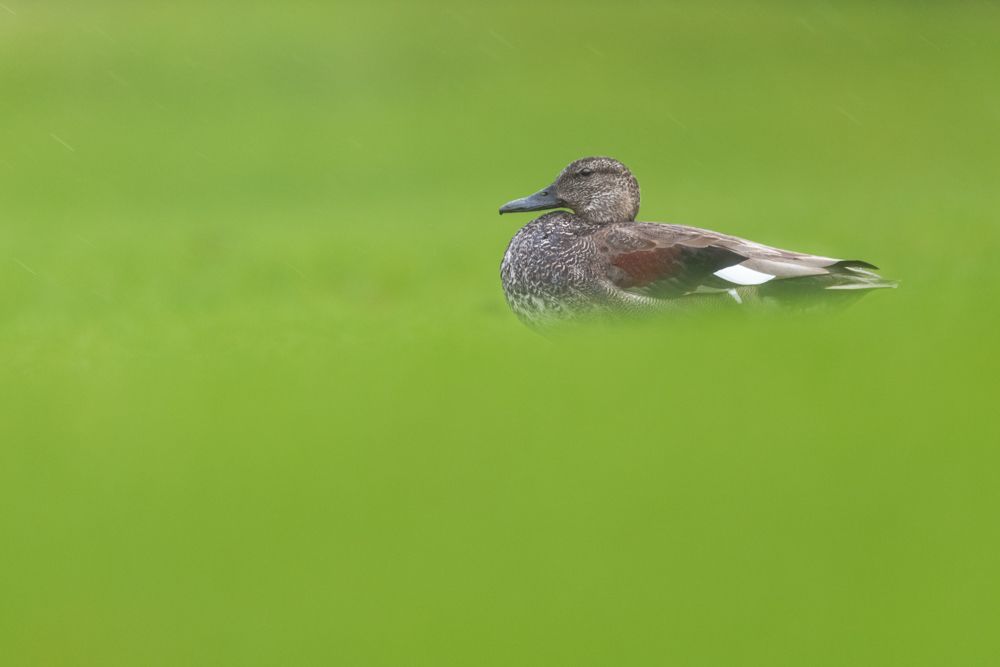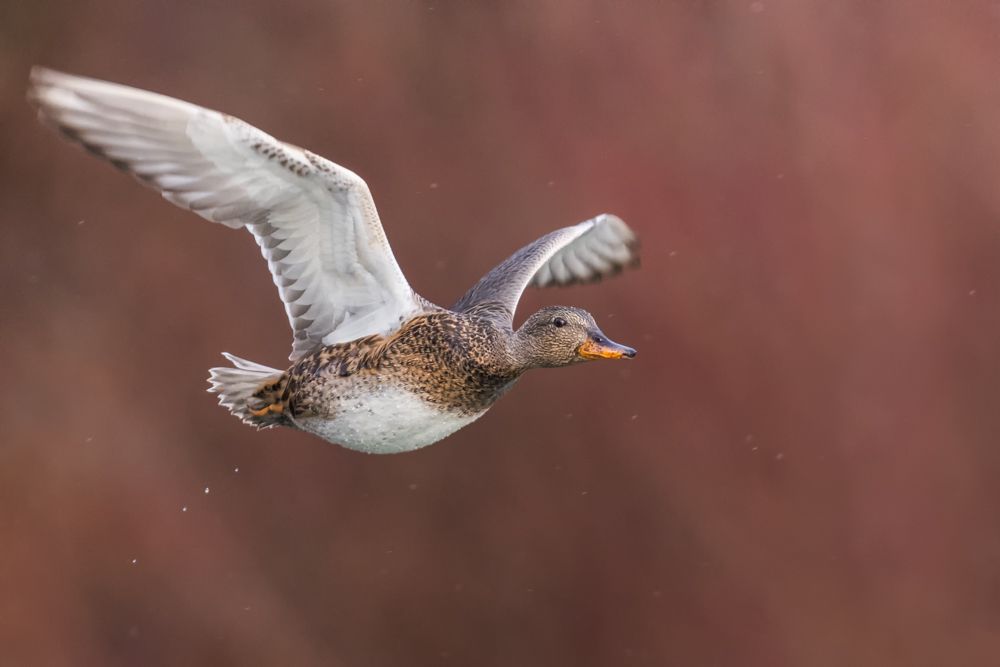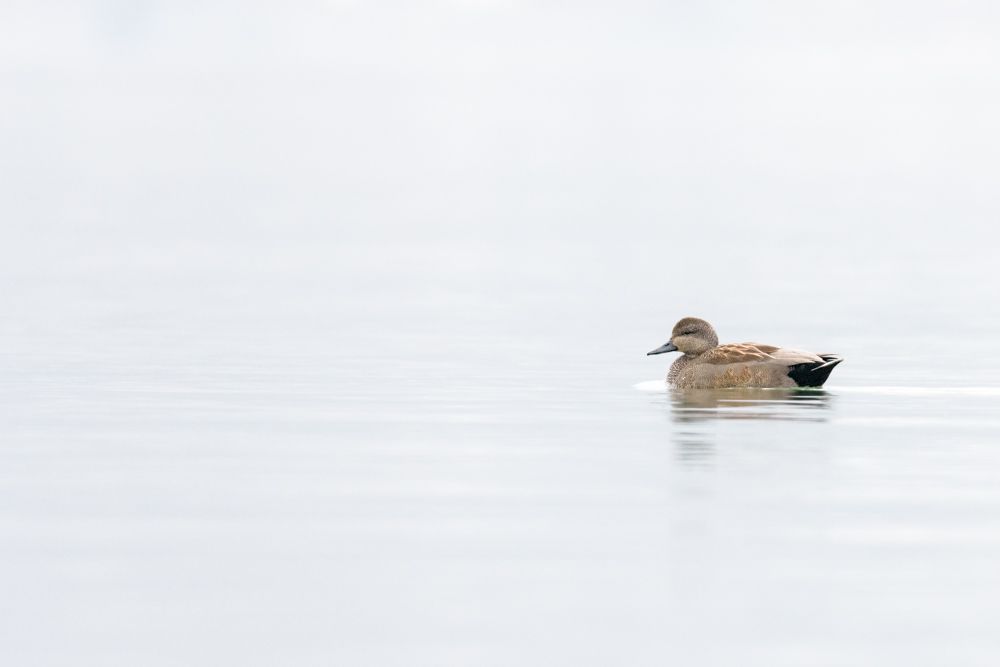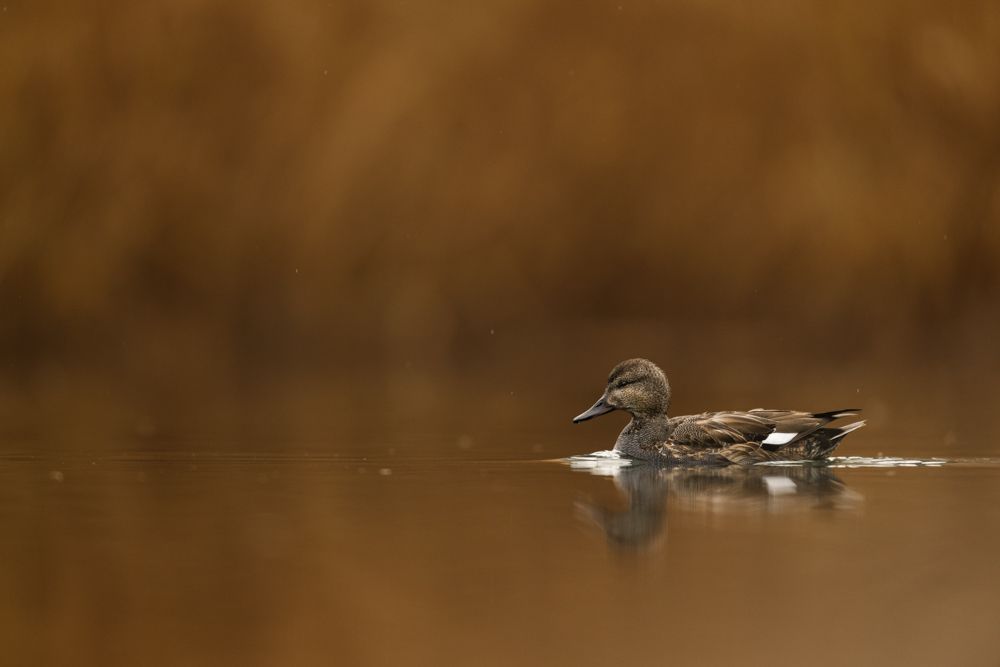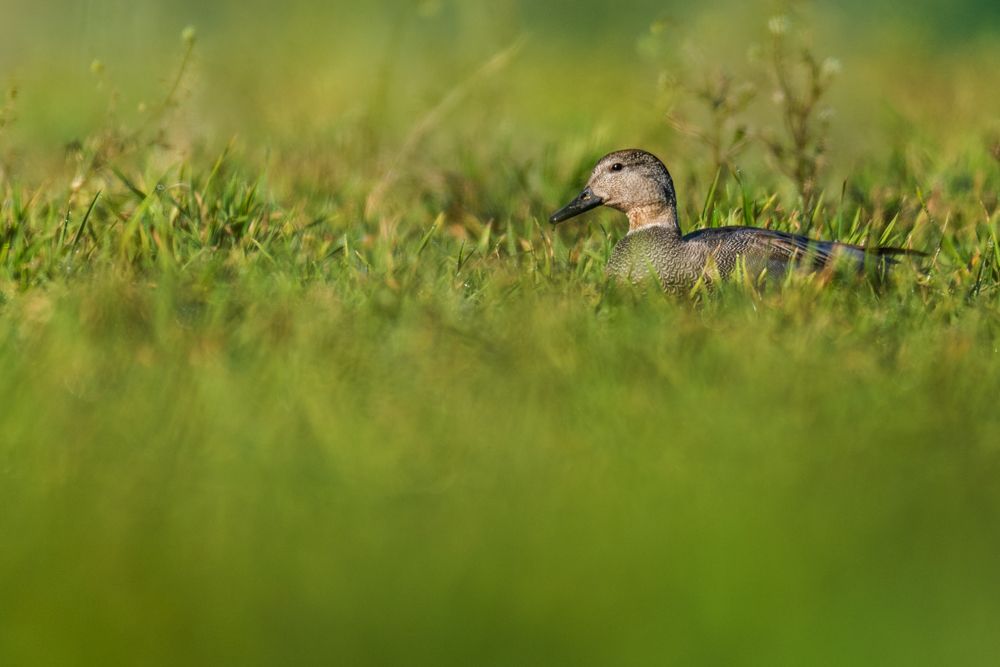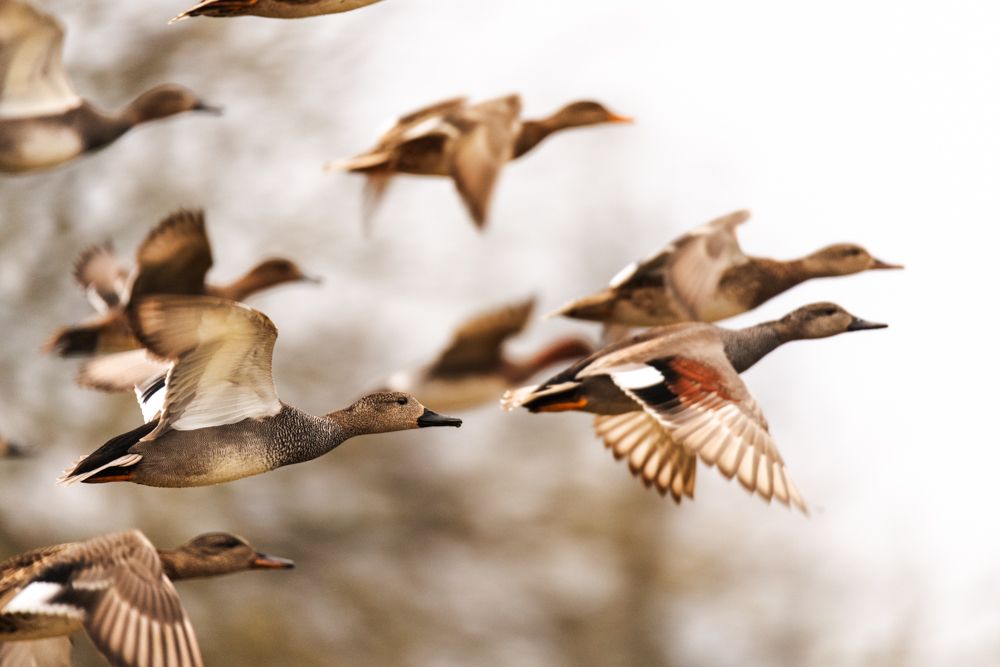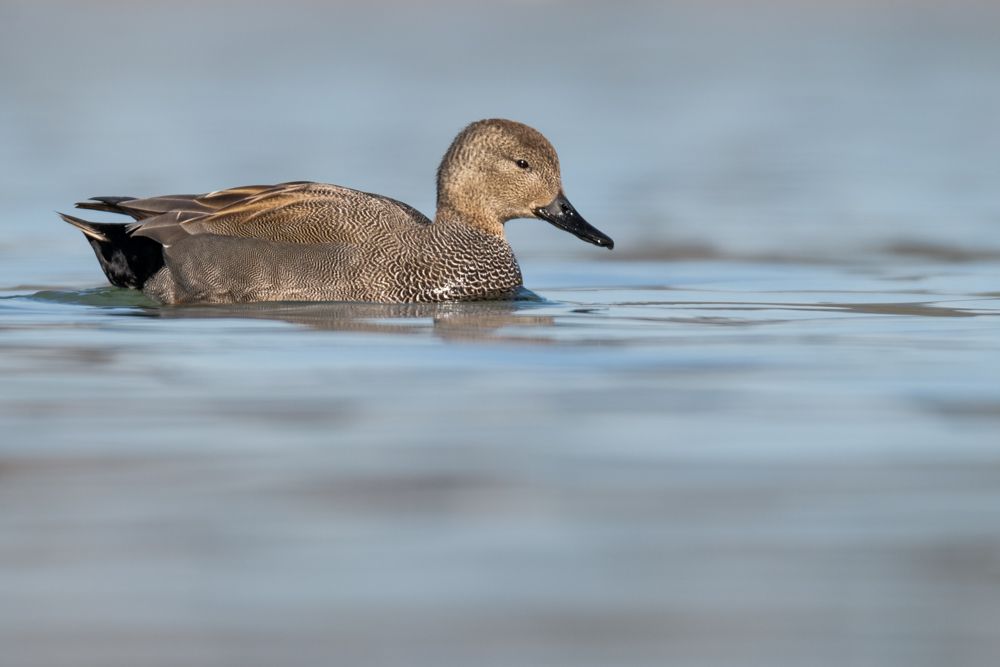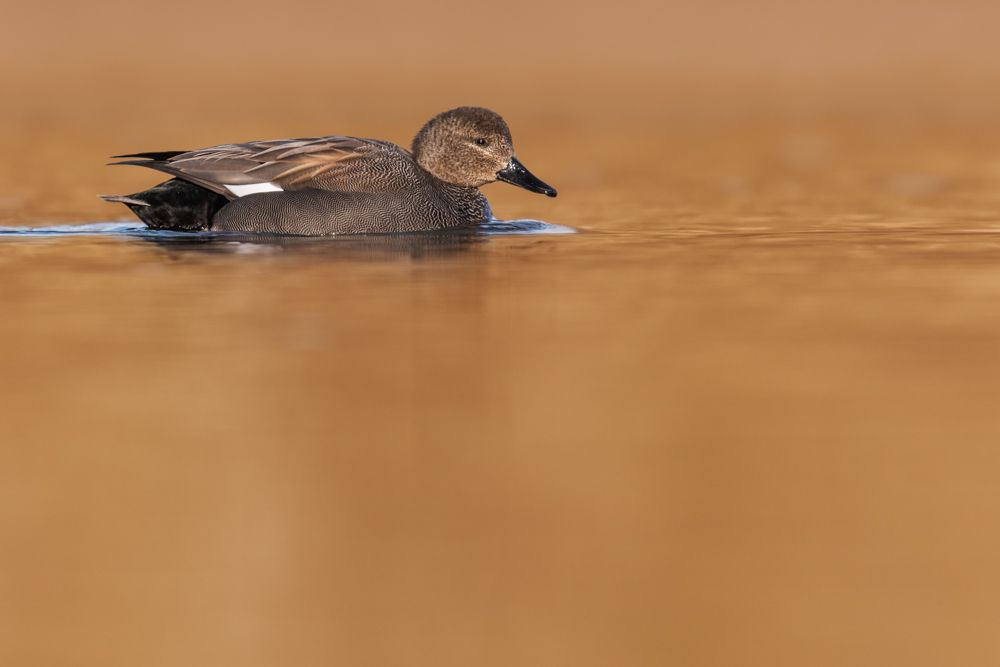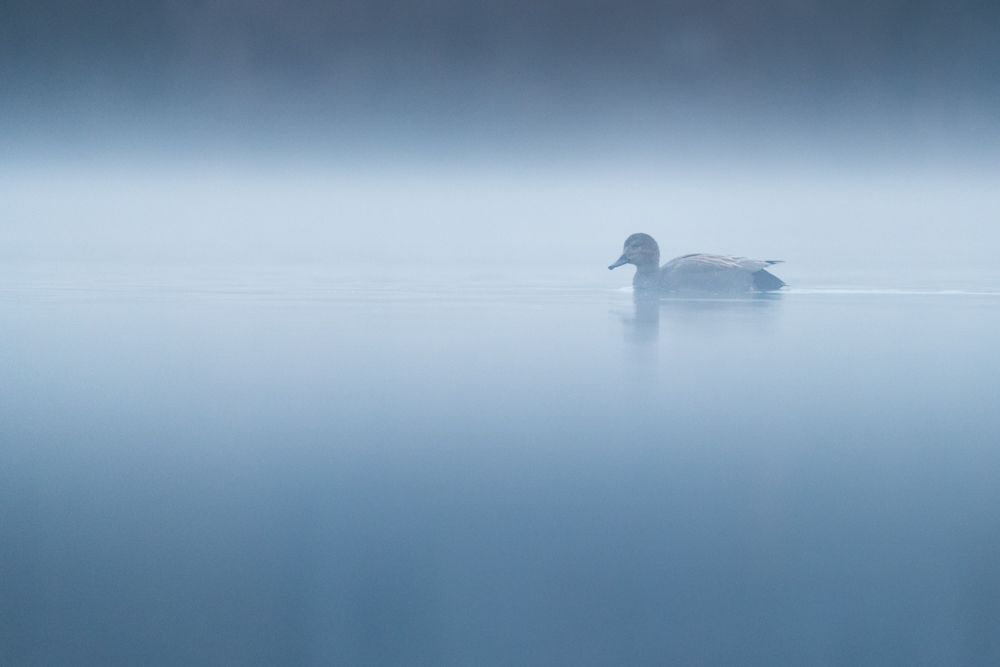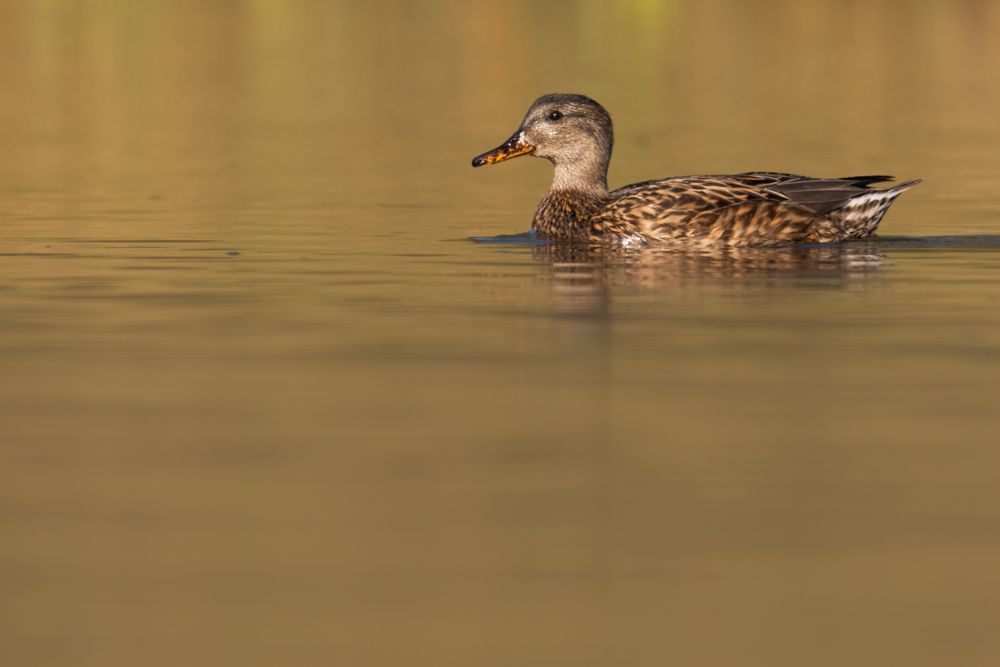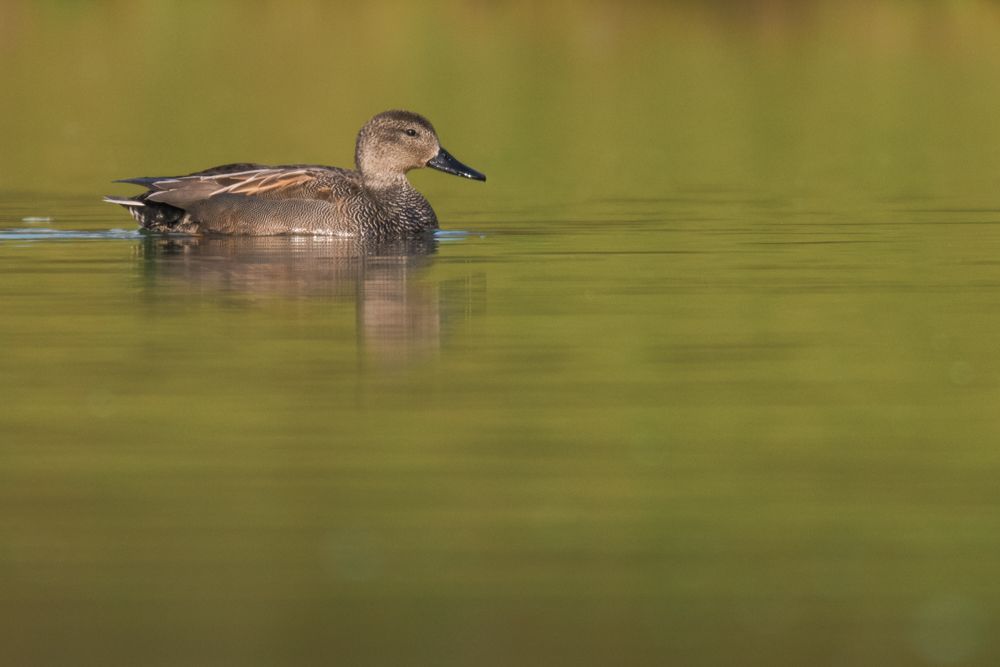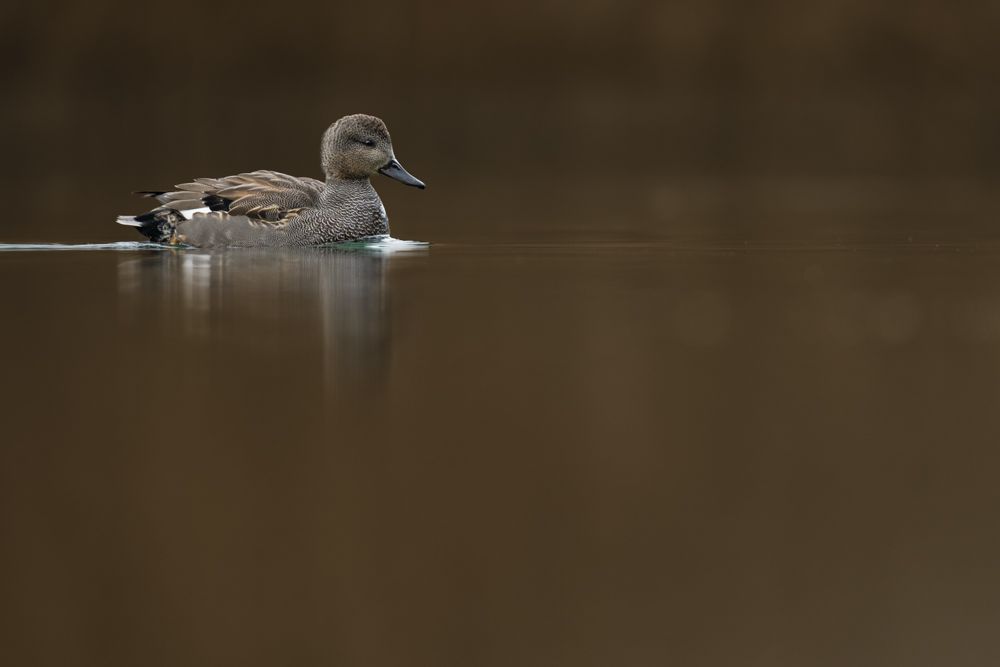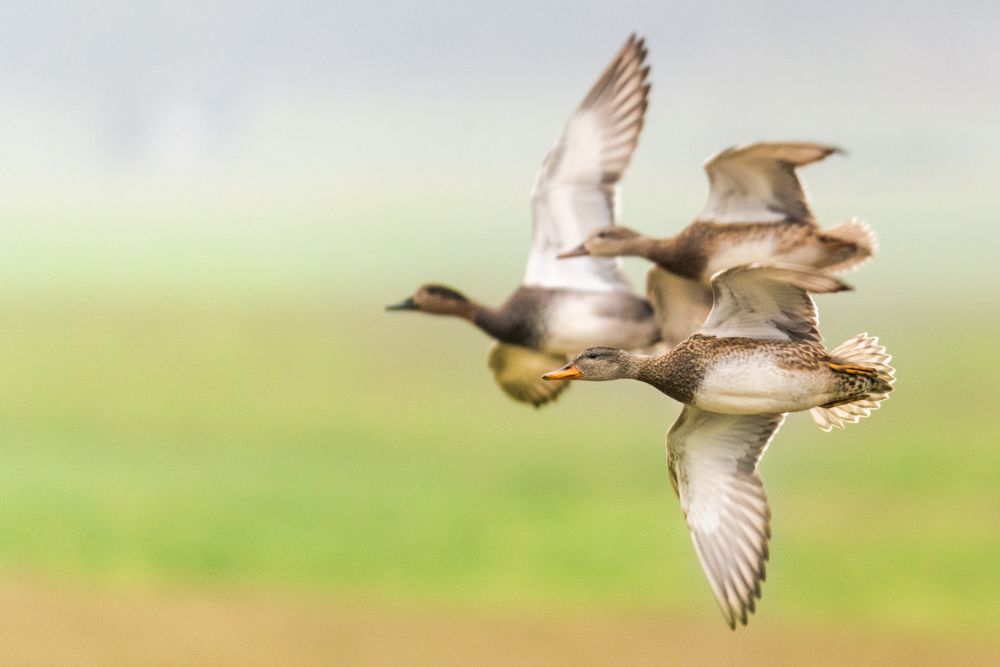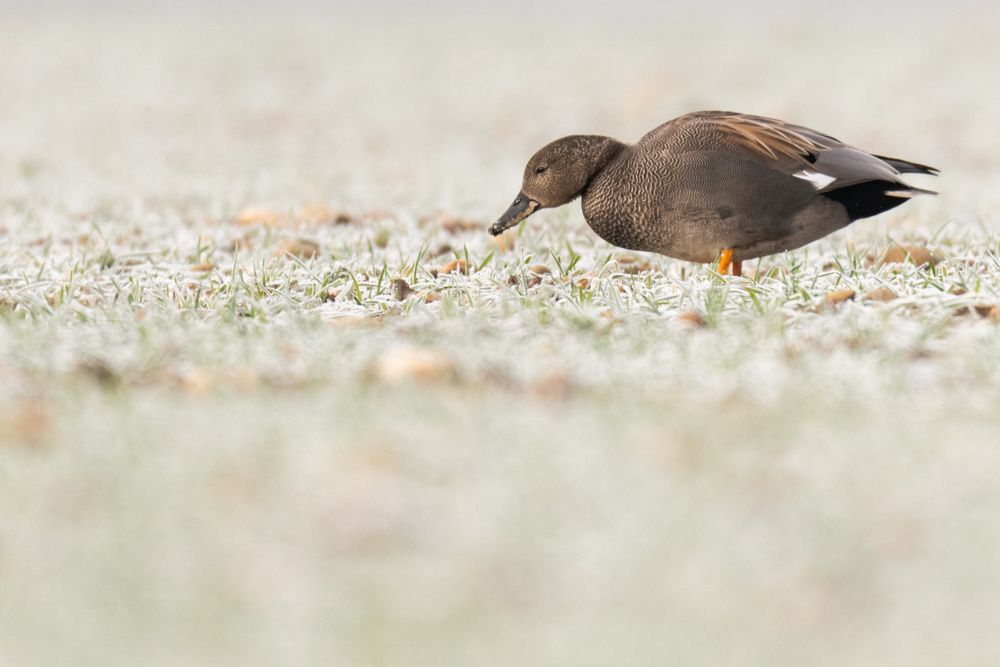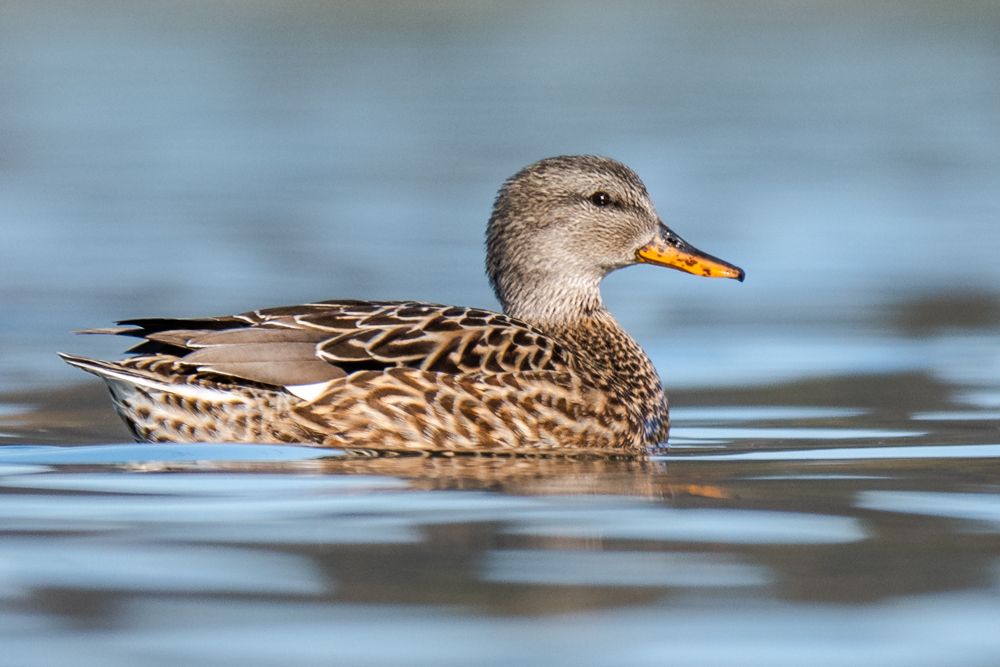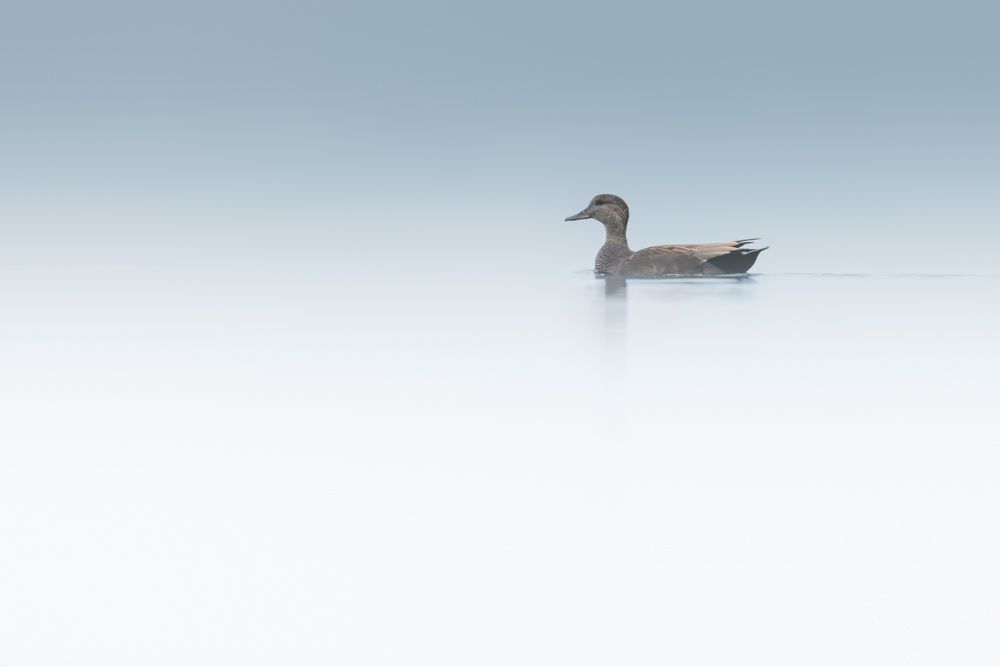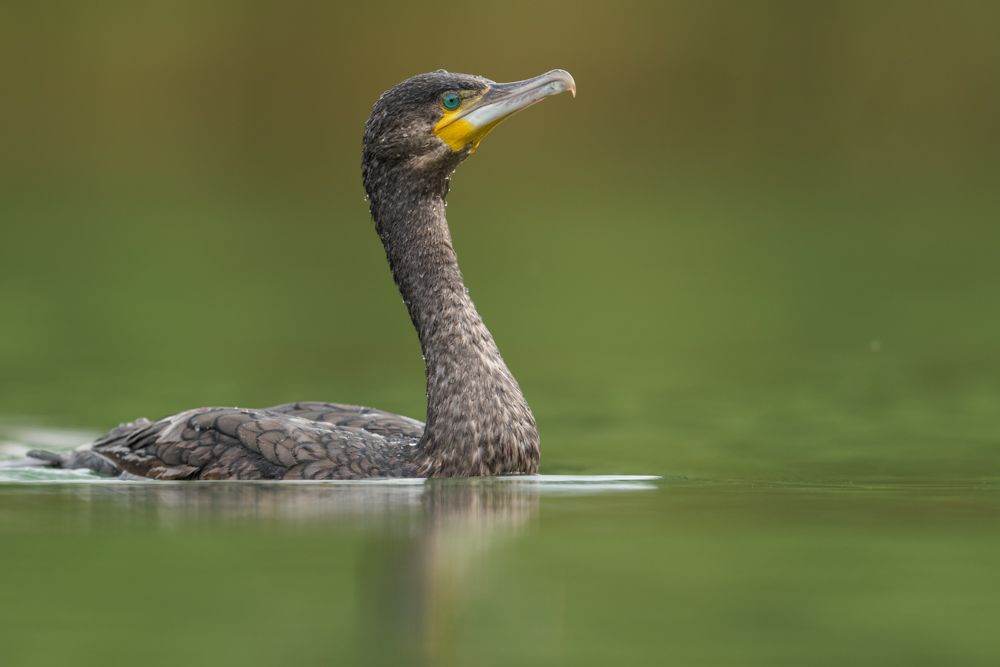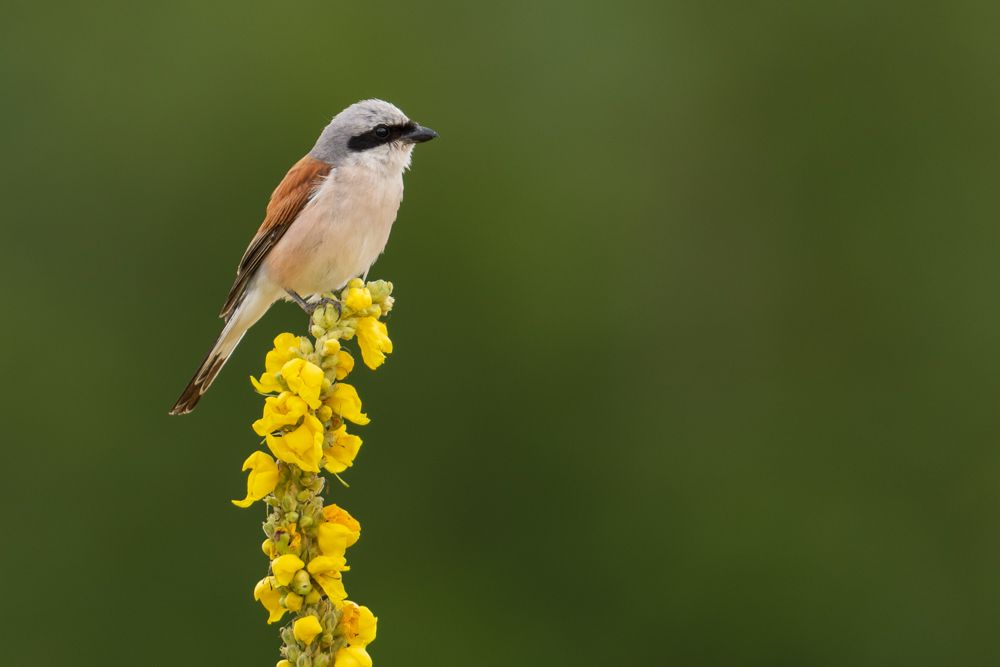Gadwall (Mareca strepera)
Profile
Scientific name: Mareca strepera
Class: Birds
Order: Anseriformes
Family: Anatidae
Length: 46-56cm
Wingspan: 84-95cm
Weight: 650-900g
Distribution: Northern hemisphere
breeding stock CH: 5-10 pairs
Habitat: Lakes and slow-flowing waters
Migration behaviour: Short and long-distance migrants
Appearance & Identification
The male is very inconspicuously coloured in comparison to other dabbling duck males. The head as well as chest, back and sides are finely patterned. The pattern on the chest and back is very distinct and can be seen even at great distances. The pattern on the head and especially on the sides is so fine that the plumage appears uniformly grey from longer distances. The gadwall has, similar to the teal, extended shoulder feathers. These are also called decorative feathers. Depending on the posture, the white speculum can be seen. However, especially with ducks that are swimming, this is usually hidden.
In summer the males moult into an eclipse plumage. This has many similarities with the plumage of the females. However, the pattern on the sides and the mantle is much more diffuse than on the females. In Switzerland, however, males in the eclipse plumage are very rarely seen.
Females are, typical for female dabbling ducks, patterned all over their body. Important features to distinguish them from other females are the beak and the speculum. The beak is coloured dark grey to black in the middle and orange on the outer sides or edges. The two colours are separated by a clear edge. The speculum is the same as the male and is therefore white.
Risk of confusion
While the male gadwalls can hardly be confused, the females are somewhat more difficult to identify. Especially the differentiation between mallard and gadwall females is not always easy. If the ducks do not show their speculum, they can only be distinguished by their beak patterns. Both have orange and black beaks. However, the transition between the two colours is not clear on the female mallard. The transition from orange to black can have patterns, spots or colour gradients. This varies from individual to individual.
If the beak is clearly visible, it should be possible to identify the duck. However, especially at greater distances this is very difficult. Only with a lot of experience can a definitive identification be made. I myself often leave female dabbling ducks unidentified if they are far away and there are no males around.
Habitat
The gadwall breeds in rather shallow, nutrient-rich waters with little to no movement. In winter, the gadwall is less demanding on its habitat and can be observed on various waters. The quite shy species can then also be found in the harbour area, in lidos or on bathing meadows.
Distribution in Switzerland
In Switzerland, the gadwall is a regular, but very rare breeding bird. The species breeds sporadically on Lakes Neuchâtel, Lake Constance and Klingnauer Stausee. A good half of the 5 to 10 breeding pairs per year breed at the Klingnauer Stausee.
In winter, the gadwall is a relatively common water bird on Swiss waters. The winter population is about 8’000 individuals per year. However, the winter population can fluctuate greatly from year to year. In cold winters, significantly more gadwall ducks come to Switzerland. Conversely, the population is lower during very mild winters.
Diet
The gadwall feeds almost exclusively on water plants. It finds these either by dabbling or straining. While the water plants are searched for with the head under water when dabbling, small plant parts are filtered out of the water with the beak when straining.
Breeding behaviour
As with all ducks, the female alone takes care of the young. The nest is well hidden in the shore vegetation. The female lays 8 to 12 eggs in spring. After 24 to 26 days the young hatch. The number of young varies between 5 to 8. They leave the nest soon after hatching. For the following 45 to 50 days the young are guided and protected by the mother. Already, they have to find food themselves.
Especially red-crested pochards often lay eggs in the nests of gadwall ducks. This leads to mixed broods. The young red-crested pochards are accepted and protected by the ‘mother bird’ like it was its own young.
Migration behaviour
The gadwall belongs to the short as well as to the long distance migrants. Long-distance migrants are migratory birds that cover more than 4000 km to their wintering grounds. Breeding birds in the far north have to cover greater distances before they encounter open waters in winter. Individuals that breed further south in Europe do not have to migrate as far south and are therefore classified as short-distance migrants. Gadwall ducks belong to the night migrants. They spend the day resting on various waters. They only continue their migration at dusk.
Photographing the gadwall
Especially in winter, gadwalls can be observed near the settlement area too. But despite their proximity to humans, gadwalls are quite shy. Especially when they graze on land in troops, they are often very timid and quickly fly up. Individual gadwalls are somewhat easier to photograph. Nevertheless, it takes a lot of patience and luck to get close enough to the ducks.
Other species
Resources
The population figures, length, weight and wingspan correspond to the data of the Vogelwarte Sempach
Information on behaviour, distribution etc. is based on my own observations and was supplemented with information from the following sources:
The Birds of Switzerland (2007) Lionel Maumary et al.
Swiss Breeding Bird Atlas 2013-2016
The Cosmos Bird Guide (2017) Lars Svensson et al.


